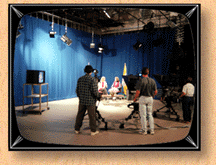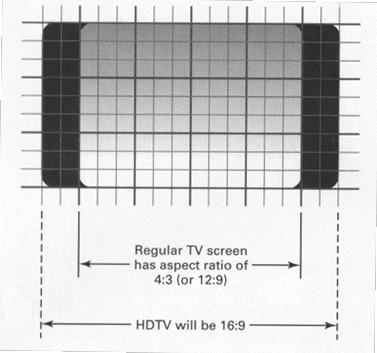
225e
THE 10 MOST IMPORTANT THINGS TO KNOW ABOUT BUYING
CAMERAS/CAMCORDERS

If you've been in the video field a while, you're used to
swimming in a turbulent surf of bells and whistles, more than
you
could ever ring or blow. And if you're new to the profession,
the foam and flotsam of fancy features can leave you treading
water, wondering which way is land.
As the tide of hype and jargon endeavors to wash us out to sea,
let's pause a moment and go back to the buoy of basics.
1. Choose a format. Of the portable formats,
Betacam SX, Sony DVCAM, Panasonic DVCPRO and JVC Digital-S record
the best pictures, but the machines cost $6,000+. While all these
formats are excellent, DVCAM and DVCPRO
are the most popular formats
for professionals.
The next step down is Digital8, DV, Hi8 and SVHS, costing $500,
with professional models
costing up to 3 kilobucks. The Digital8 and DV formats are digital,
yielding 500
lines of resolution (very sharp picture) and tapes copied
digitally are virtual clones of each other, showing no
degradation. For the analog formats, Hi8 and SVHS, the first
generation pictures look excellent, but the color-under method
of
recording reduces the color sharpness right from the start. SVHS
and Hi8 are good for about 3 generations of editing/duplication,
but nothing stops you from shooting in these formats and editing
in some better format.
VHS and 8mm are out of the question for serious video work
(except for documenting speeches, hurricane damage, or other
"quickie" one-generation stuff).
And what about 3/4U? It's a dinasaur. Wear out what you have
(SP models are as good as SVHS and Hi8 professional models), then
move to another format.
2. Three chips are better than one. Like in a Mexican
restaurant, the more chips you get, the better. One-chip cameras
sense all the colors on one CCD; fuzzy, but small, light, cheap,
and very sensitive in dim light.
Best, (and most expensive) are the three-chip cameras. The light
splits into three primary colors (yes, reducing its brightness),
and one chip is totally dedicated to each color. Here, the
colors stay sharp and pure; luminance resolution is excellent.
3. Check for low light sensitivity. Lighting in the field is
hard to control. The more sensitive the camera, the better.
Microlens technology (microscopic insect-eye lenses bonded to
the
CCD chip) improves sensitivity by concentrating light on the
right parts of the CCDs, wasting little on the connecting wires
inbetween. Low noise circuits allow the gain (image brightness
and contrast) to be boosted maybe 3-18 dB while adding little
grain to the picture.
Light sensitivity is measured in lux. The lower the number of
lux in the spec, the more sensitive the camera. For example, a
3
lux camera can shoot in less light than a 10 lux camera.
Don't trust the specs on consumer and prosumer cameras unless
they measure them by the "ANSI" method. Some manufacturers
don't adhere to established standards of measurement. Also check
that the specs are given with the same amount of gain boost; one
camera can shoot in 2 lux with +18 dB gain boost, making a fairly
grainy picture, while another does the same thing with only a
+6
dB gain boost (a smoother picture).
Most professional cameras adhere to more standardized specs,
typically 2000 lux at f8. This is a lot of light, but there is
no gain boost and the lens can offer a decent depth-of-field.
In most cases, the more light you throw onto the subject, the
better your picture will look, especially the colors.
4. The higher the resolution the better. Higher resolution
means sharper pictures. Prosumer cameras start at about 400 lines
of horizontal resolution, professional models reach 700.
Even if your recorder can reproduce only 400 lines of resolution
(such as SVHS and Hi8), the extra resolution from the camera is
not wasted. A 700 line camera will make a better SVHS picture
than a 450 line camera.
5. Check for smear. Smear is a vertical stripe you see running
through bright lights (ie. headlights at night) in your picture.
The better chips (Hyper HAD, for instance) counteract this
abberation.
6. Shoot for the highest S/N (signal-to-noise ) ratio.
You want a pure, smooth picture with lots of signal and little
noise (grain). The S/N ratio is hard to measure yourself
(although your eyeball can detect gross differences). Here is
where you have to trust the specs.
In any case, the more light (is this starting to sound familiar?)
you throw into your shot, the smoother the image will look.
7. Look for automatic controls with overrides. The automatic
controls get you shooting quickly (while you dive into the ditch
as a tornado whirls by) and save you from twiddling knobs while
hanging from a parachute or skulking around in the dark. They
also allow you to concentrate on your shooting, unfettered with
the mechanics of focusing, white balance, etc. They also allow
amateurs to get good shots.
On the other hand, overrides allow you to take manual control
of
the focus (you want the shot of the nearby leaf, not the bathing
beauty in the background), iris (to brighten up the face in the
shadows, to heck with the sky behind), white balance (you want
a
yellowish tint to the picture), etc.
8. Consider DSP (Digital Signal Processing). DSP cameras aren't
much better per se, but DSP allows you to:
a) Set up the camera controls (black and white balance, etc.)
easily.
b) Make all your camera adjustments once for each shooting
situation, then store them to be retrieved at the touch of a
button.
c) Forget about "drifting" circuits and noisy or troublesome
potentiometers and switches. Digital means there are almost no
moving parts to age or corrode.
d) Digitally suppress undesirable artifacts such as dark color
noise.
9. Look for multiple-use flexibility. Can this camera be
configured for the studio and EFP? What does it cost for the
extra parts (viewfinders, lens cable drives, etc.) to do so?
Dual-use cameras can serve two masters.
Is the camera dockable so that it can be used in the studio or
teamed with a VCR in the field? What does the docking adapter
cost (usually a pound of flesh).
Is the camera upgradable to HDTV? Some
cameras can work in
today's 3:4 aspect ratio (the shape of a common TV screen) and
make NTSC video signals, and then with the flip of a switch,
change to 1080i or 720p DTV modes with a 16:9 aspect ratio.

10. Now, for the bells and whistles:
a) Time code generator built-in (to keep track of your shots
when editing)
b) Variable shutter speed (freezes motion, or allows you to have
computer screens in the shot without seeing bars running across
their CRTs)
c) Wide variety of lens options.
d) Good camera balance. How does it feel on your shoulder?
e) Quick start recording (to catch that tornado).
f) Low power consumption (to squeeze a full 40 minutes out of
your aging one-hour battery)
g) Four audio channels, rather than the usual two.
h) EIS --- Electronic Image Stabilization on prosumer cameras
reduces the shakes when working sans tripod.
i) Color viewfinder --- skip this. Viewfinders tell you the
truth about your focusing; color viewfinders are relatively
fuzzy, not truthful. Secondly, color viewfinders are seldom
adjusted correctly and LCD types give poor color accuracy, again,
not very truthful.
| About the author | About Today's Video 4th. ed. | Return home |